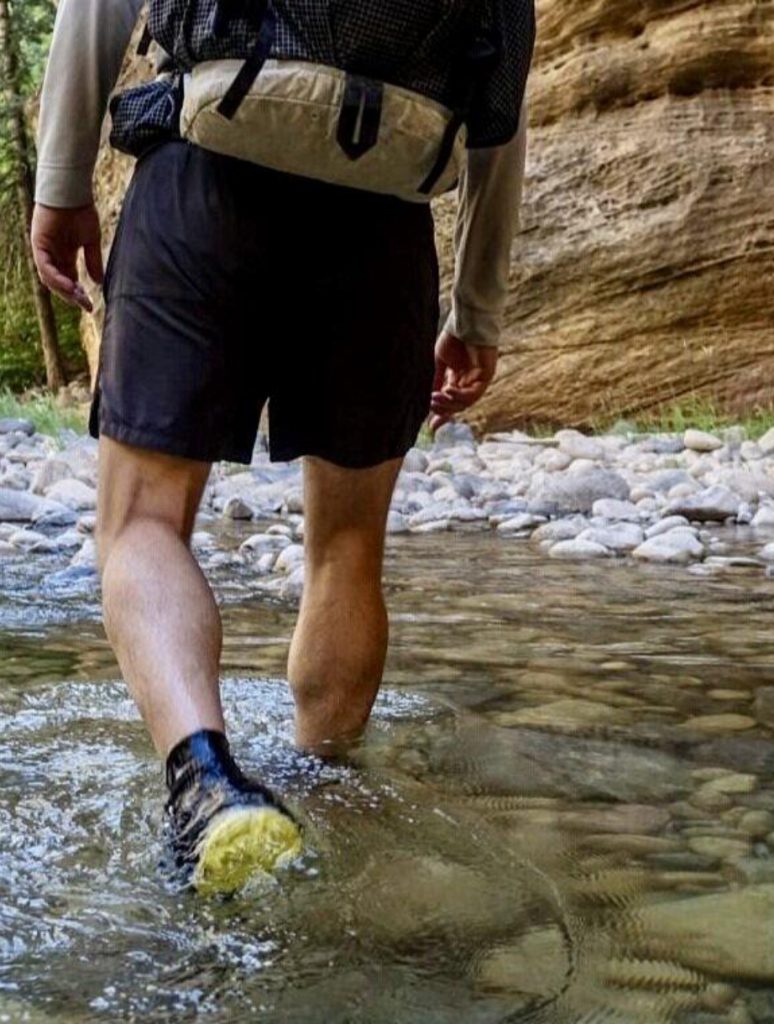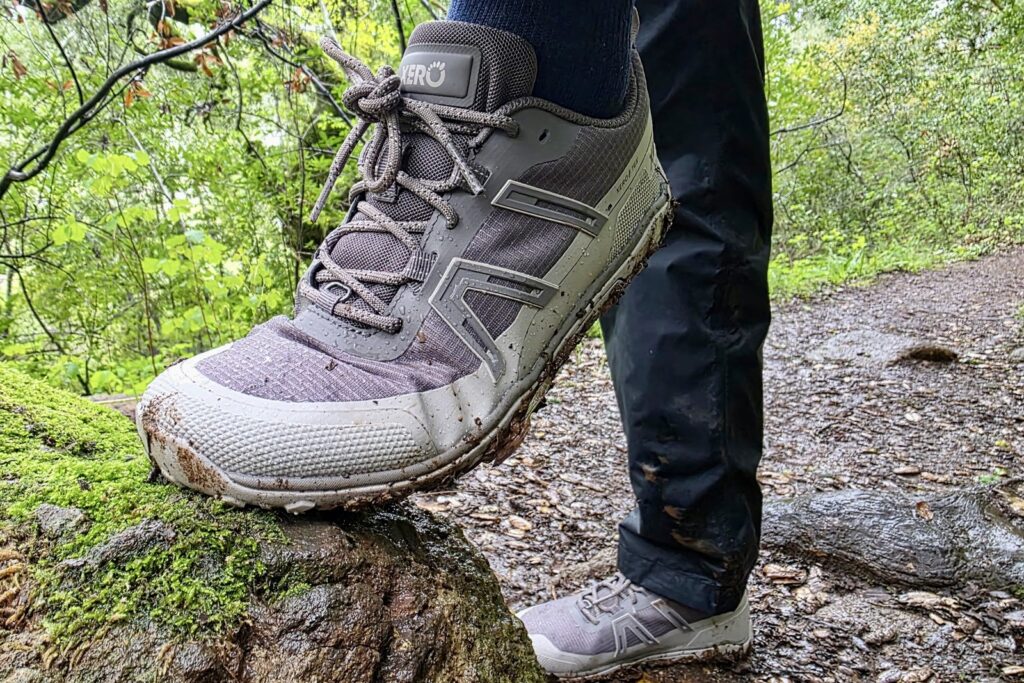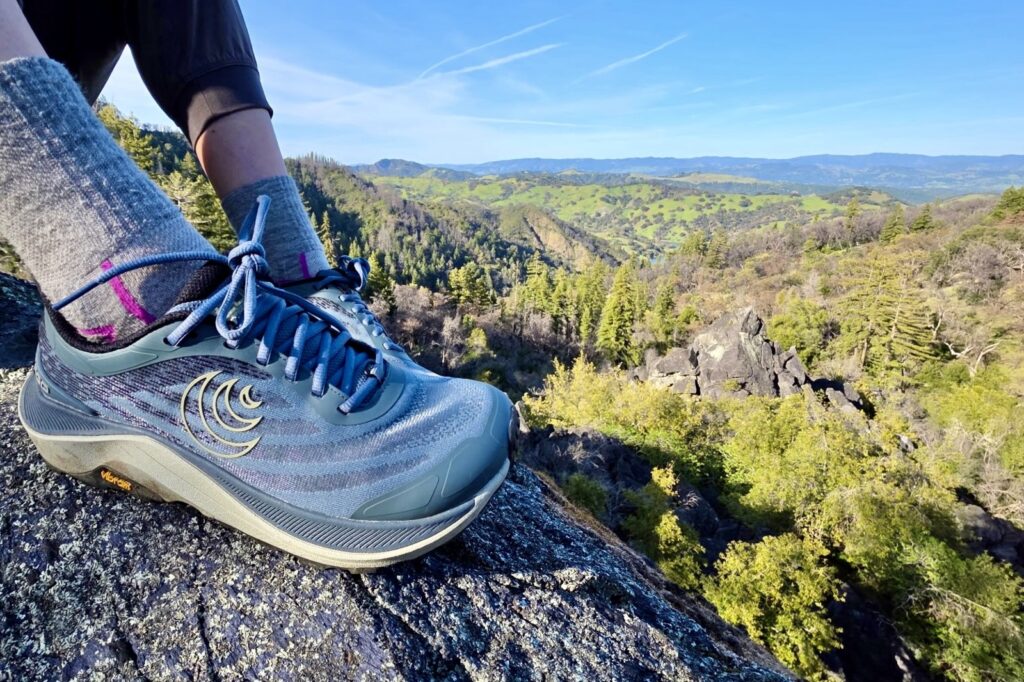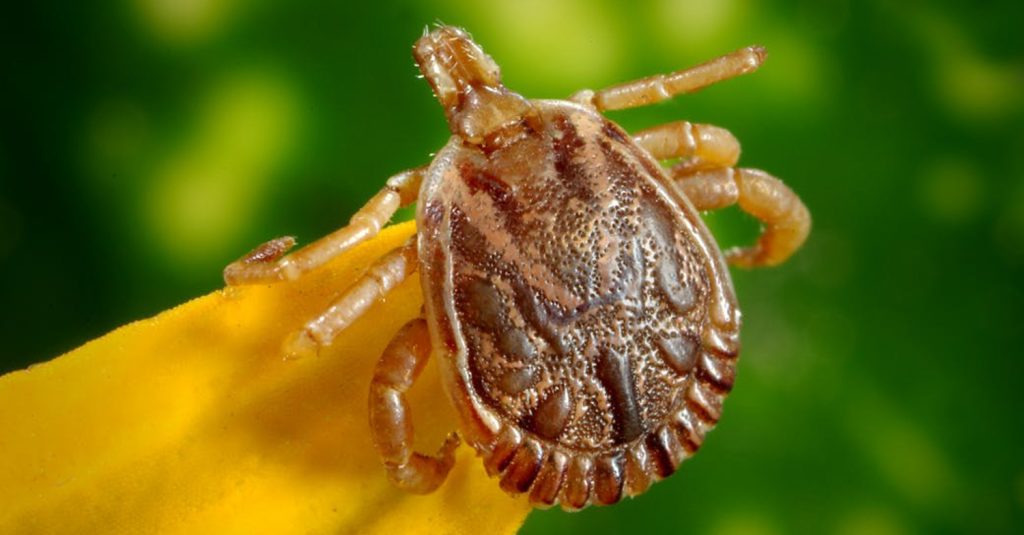
Few things in the outdoors make people squirm as much as ticks, and for good reason. Cases of Lyme disease are on the rise, and practically speaking, they are pretty gnarly to look at and remove, particularly when they’re attached and engorged.
Less cold winter weather generally means greater survival of larva and adult ticks, which leads to a population boom in the spring.
Most hikers are aware of ticks, but having the knowledge and skills to manage them in the backcountry will help you feel confident when you do encounter them. Here, we’ll cover general information on ticks, prevention, removal, and how to best protect yourself.
Species of Common Ticks
Different species live in different regions of the country, carrying and transmitting species-specific diseases. Only a few select species, however, bite and transmit disease to people, and much of it seasonally dependent.
Some populations of ticks may be found general areas listed below. The CDC has very informative diagrams of geographical distributions of each tick species.
- American Dog tick – (also called Wood Tick) Widely distributed east of the Rocky Mountains. Also occurs in limited areas on the Pacific Coast.
- Blacklegged tick – Mostly found in the Northeast and upper Midwest. The greatest risk of being bitten by one is in the spring, summer, and fall. Biters include adult females and nymphs. However, adults may appear any time winter temperatures are above freezing.
- Brown dog tick – Found throughout the US, including Hawaii. Dogs are the primary victims, although opportunistically they may also bite other mammals and humans. Adult females spread Rocky Mountain spotted fever.
- Gulf Coast tick – Found primarily along coastal areas of the U.S. along the Atlantic coast and the Gulf of Mexico. While larvae and nymphs feed on birds and small rodents, and adult ticks feed on deer and other wildlife, adult ticks have been associated with transmission of Rocky Mountain spotted fever to humans.
- Lone star tick – The CDC calls this a “very aggressive tick.” It’s widely distributed throughout the southeastern states, with some cases showing up in the upper Midwest, and the Northeast. The nymph and adult females most frequently bite humans and transmit disease, including Ehrlichia chaffeensis and Ehrlichia ewingii which cause human ehrlichiosis, heartland virus, tularemia, and STARI. It can also cause an allergy called Alpha-gal.
- Rocky Mountain wood tick – Found in the Rocky Mountain states and southwestern Canada from elevations of 4,000 to 10,500 feet. Adult ticks feed primarily on large mammals.
- Western black legged tick – These are unlikely to bite you – less than 1% of adults feed on humans. They are largely found along the Pacific coast of the U.S., especially Northern California.
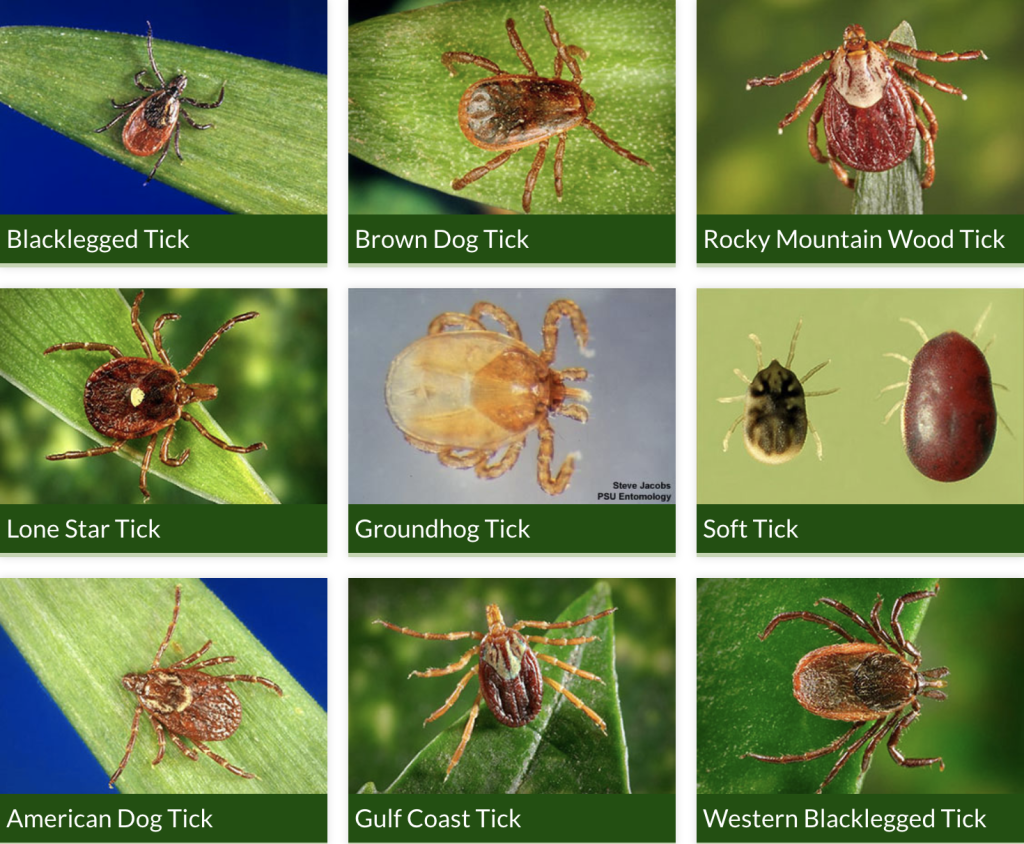
Common Tick-Borne Diseases
According to Dr. Daniel Cameron, MD, MPH, a nationally recognized expert on ticks, there are many tick-borne infections that pose a threat to humans and dogs. Below are some of the well known tick-borne illnesses.
- Lyme Disease – (Borrelia burgdorferi) Spread by the deer tick, this is the most widely known disease associated with tick bites. Though it can be tricky to diagnose and can cause chronic illness, Lyme disease can be treated successfully with a few weeks of antibiotic. According to the CDC, typical symptoms include fever, headache, fatigue, and a characteristic skin rash called erythema migraines. In most regions, about 50% of female deer ticks are infected with the Lyme disease spirochete. On the comforting side, that means even if you are bitten, there’s a good chance the tick was not a carrier. Even if you are bitten, this is a treatable condition. However, if you know or suspect you have been bitten by a tick, it is very important to be seen by a doctor within 48 hours.
- Alpha-gal – Galactose-alpha-1,3-galactose (alpha-gal) is a carbohydrate found in the cells of many mammals that humans eat, such as cows, sheep and pigs. The Lone Star Tick contains alpha-gal, and their bite can trigger the immune system to go on defense and over-react to it. It can make you allergic to meat.
- Ehrlichia – Lone star ticks are the primary source of Ehrlichia chaffeensis and Ehrlichia ewingii. Typical symptoms of this disease include fever, headache, fatigue, and muscle aches, which typically occurs within 1-2 weeks following a tick bite.
- Babesia – Also called a “piroplasm,” this tick introduced pathogen can cause malaria-like symptoms and is very much malaria-like in action that infects red blood cells.
- Rocky Mountain spotted fever – (Rickettsia rickettsii) Infections occur mainly east of the Rocky Mountains, but have also been found in limited areas on the Pacific Coast. If you don’t get treated for it by the fifth day after a bite, the disease is highly fatal.
- Pacific Coast tick fever – (Rickettsia philipii) Both dogs and human can suffer from this painful and debilitating tick-borne disease.
- Tularemia – Also called rabbit fever or deer fly fever, this rare infectious disease typically attacks the skin, eyes, lymph nodes and lungs; caused by the bacterium Francisella tularensis.
- STARI – (Southern tick-associated rash illness). Some Lone Star Tick bites produce a circular rash similar to the rash of early Lyme disease, but is less consequential.
Though many of these diseases sound scary, it’s important to remember that they are treatable. If you know or believe you have been bitten by a tick, it’s important to see medical guidance as soon as possible, ideally within 48 hours.
Stages Of Tick Development
Ticks typically go through four stages of development: egg, larva, nymph, and adult. In general, May is the most active month across the country of for ticks.
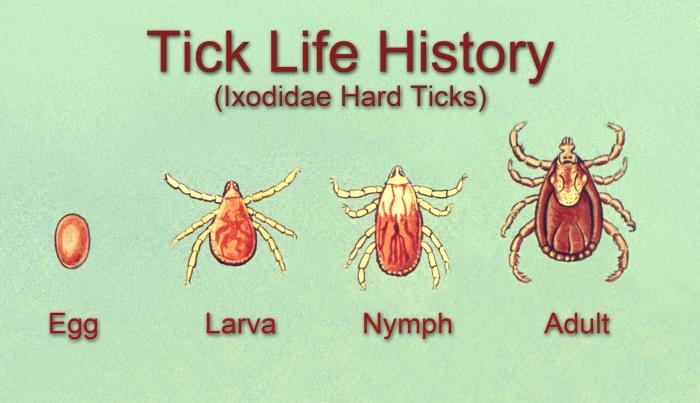
- Newly-hatched larva are only about the size of a dot or a period at the end of a sentence, and feed on the blood of mice and birds. Lone star ticks are an exception; they sometimes bite humans in the larval stage, according to the Centers for Disease Control and Prevention.
- Once they become nymphs, they grown to the size of a pinhead. Once engorged, nymphs detach from their host and molt into adults. Fully-grown females are more like the size of a apple seed. Only infected ticks in either of these two stages pose a risk to humans.
- The males are a bit smaller and only “blood” feed briefly. They don’t become distended with blood like the females. And once they’re done they look for a female to mate with.
- Adults prefer to feed on large mammals – like deer and humans. But they also like birds, mice, chipmunks, and dogs. After the females find a host to feed on, they mate with an adult male, lay up to 1,500 eggs (some even 4,000), and then die.
How to Protect Yourself on Trail
INSPECT DAILY – Be sure to check yourself at least daily when backpacking or hiking in forests and brush-covered landscapes. Generally, people cannot feel a tick bite, but after a day or two, they feel a mild itch.
Despite the rumors, ticks don’t jump, fly or fall from trees. What they do, instead, is detect carbon dioxide in passing mammals. They’ll wait for a host to come into their vicinity and then, using outstretched front legs latch onto a host looking for a warm spot.
Be sure to check the following areas thoroughly:
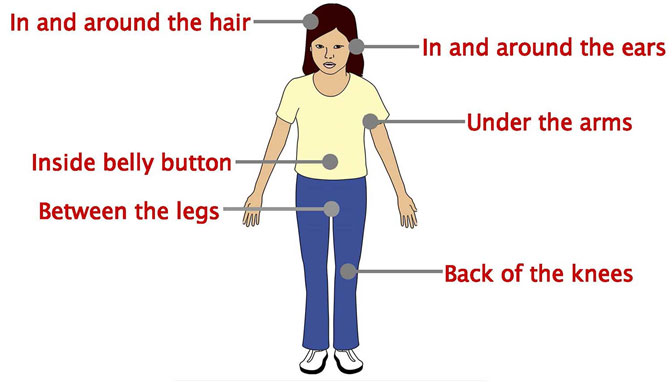
WEAR INSECT REPELLANT – A good way to keep ticks off you is to wear insect repellant. The CDC approved list includes DEET, Picaridin, oil of lemon eucalyptus (OLE) or (PMD).
SPRAY PERMETHRIN – Before heading outdoors, spray your clothing, gear, and hiking footwear with permethrin, an insecticide that kills mosquitos, black flies, and ticks, with no harm to humans or dogs. Permethrin is effective on clothing and gear for multiple washing cycles.
EDUCATE YOURSELF – Do your research and have an understanding of tick prevalence in the region you’re hiking. Read trip reports on your intended hiking route to check current conditions. Understand the risks and ways you can protect yourself.
MINIMIZE CONTACT WITH TICKS – Avoid hiking in tall grass, brushy areas, or heavily wooded areas. If taking breaks, try to avoid sitting directly on the ground and hike in the center of the trail to reduce contact with ticks.
WEAR LIGHT COLORED CLOTHING AND TUCK IT IN – Wear light colored clothing so you can easily detect a tick crawling on you. If you know you’re hiking in tick country, wear long pants and tuck them into your socks. Also, tuck your shirt into your pants to keep ticks from entering near your waistband.
CARRY A TWEEZER OR TICK REMOVER – There are a bunch of different tick removal tools, but a simple fine-tipped tweezer is easy to carry and does the job.
WHEN YOU RETURN HOME
- Thoroughly check your pets and gear. Ticks have been known to attach to gear or pets and unknowingly be carried into your home, to later attach to a human. By checking for ticks before entering your home, you’ll reduce the likelihood of off-trail latching.
- De-tick clothing by throwing everything into a hot dryer for 10 minutes, before washing. The ticks will desiccate in the dryer, whereas they can actually survive a trip through a washer.
- Showering immediately after being outdoors can reduce the risk of tick-borne diseases. It’s also a good opportunity to check for ticks.
Removal of Ticks
If you find a tick on you, don’t panic. Follow these tick-removal steps from the Centers for Disease Control.

- Grasp the tick with a tool as close to the skin’s surface as possible.
- Pull upward with steady, with even pressure. Don’t twist or jerk the tick. You don’t want the mouth-parts to break off and remain in the skin.
- After removing the tick, thoroughly clean the bite area and your hands with rubbing alcohol or soap and water.
- If you still see any bits of the tick, try to remove them with the tweezers. If you can’t get them out, leave them alone and let the skin heal.
NEVER CRUSH A TICK WITH YOUR FINGERS – Dispose of a live tick by putting it in alcohol, placing it in a sealed bag/container, wrapping it tightly in tape, or flushing the alcohol-drowned tick down the toilet, if at home.
DON’T TRY “PAINTING” THE TICK – Some people have heard of the strategy of “painting” the tick with nail polish or petroleum jelly, or using heat to make the tick detach from the skin. Instead, remove the tick as quickly as possible– do not wait for it to detach.
FOLLOWING A BITE, MONITOR SYMPTOMS – If you develop a rash or fever within several weeks of removing a tick, see a doctor. Be sure to tell the doctor about your recent tick bite, when the bite occurred, and where you most likely acquired the tick.

Dogs & Ticks
To prevent your pet from contracting a tick-borne disease or carrying ticks or larvae into your home after a trip, it’s imperative that you take preventive measures with your pets. Below are several tips on protecting your pets.
TREAT THEM IN ADVANCE – If you hike with your dog, treat them with a monthly preventative medication. Check with your veterinarian for specific product recommendations for your pet.
DAILY INSPECTIONS – Just as you check yourself daily, it’s important to do the same with your pets. Give them a quick brush at the trailhead and run your fingers across their chests, belly and legs. If a tick is found, remove it immediately using the similar steps to a human. Some people even keep a tick key on their dog’s collar so you always have a tool handy.
CHECK THOROUGHLY BEFORE GETTING INTO YOUR CAR – If you’re heading off the trail, check them before you get into your car. If they carry them into the house, you increase the likelihood of having them latch on to you.
USE DUCT TAPE FOR LARVAE – To get a lot of crawling larvae off of you or your dog before they bite, try using duct tape as soon as you notice them.
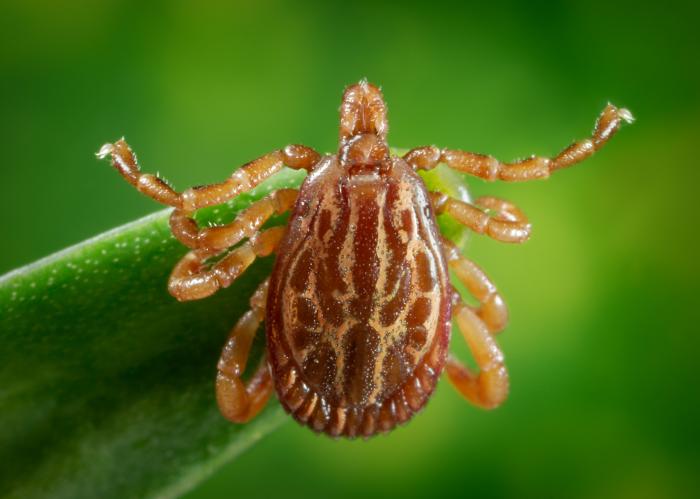
Conclusion
With a little bit of education, proper protection, and vigilance, hiking in tick country can be enjoyable and safe. We hope this guide equips you with the knowledge and skills you need to hike and backpack in tick country.


